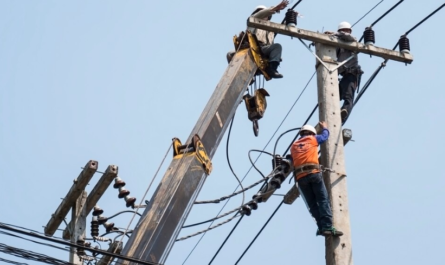Safety Management’s Role
🧯 Introduction: More Than Hard Hats and Safety Signs
When people think about workplace safety, they often picture hard hats, fire extinguishers, and emergency exit signs. But there’s so much more beneath the surface. Safety management isn’t just about ticking off checkboxes—it’s a strategic pillar that ensures business continuity, boosts morale, and saves lives.
In this article, we’ll explore how safety management goes beyond compliance. We’ll dive into its evolving role, core principles, and how modern businesses can leverage safety as a competitive advantage.
🛡️ What is Safety Management?
Safety management refers to the systematic process of managing health and safety risks at work. It involves planning, implementing, evaluating, and improving workplace practices to prevent accidents, injuries, and health hazards.
In simple terms, safety management is about proactively creating a safe work environment—not reacting to accidents after they happen.
🎯 Why Is Safety Management Important?
The stakes are high. Workplace injuries and illnesses not only disrupt operations but also damage reputation, decrease productivity, and increase legal and financial risks.
Here’s why safety management matters:
- Reduces workplace injuries and fatalities
- Improves employee morale and trust
- Minimizes downtime and insurance costs
- Ensures regulatory compliance
- Builds a positive brand image
👉 Think about it: A safe workplace is a productive workplace. Would you give your best in a place where you don’t feel protected?
🧱 Core Pillars of Effective Safety Management
Let’s break down the core components that make safety management systems effective and resilient.
1. Leadership Commitment
Safety starts at the top. Leaders who prioritize safety set the tone for the entire organization.
- Allocate budgets for safety training and equipment
- Regularly participate in safety meetings
- Hold themselves accountable
💬 Leadership mantra: “If it’s not safe, it doesn’t get done.”
2. Hazard Identification and Risk Assessment
You can’t fix what you don’t know. That’s why hazard identification is a cornerstone of any safety program.
- Conduct regular workplace inspections
- Use tools like Job Hazard Analysis (JHA)
- Maintain up-to-date safety data sheets (SDS)
🔍 Pro tip: Encourage employees to report near-misses—they’re golden opportunities for prevention.
3. Employee Training and Engagement
Training isn’t a one-and-done deal. Continuous education empowers employees to make safer choices every day.
- Safety orientation for new hires
- Monthly refresher courses
- Simulation drills and real-world scenarios
💡 Engagement trick: Turn boring safety talks into interactive quizzes or games.
4. Incident Investigation and Reporting
Mistakes happen—but what matters is how we learn from them.
- Establish a no-blame reporting culture
- Document incidents thoroughly
- Analyze root causes, not just symptoms
📈 Outcome: Transparency builds trust and leads to lasting improvements.
5. Monitoring, Evaluation, and Continuous Improvement
Safety isn’t static. It evolves with new technologies, job roles, and regulations.
- Use KPIs like Lost Time Injury Frequency Rate (LTIFR)
- Conduct annual safety audits
- Act on feedback and adjust policies
🔁 Golden rule: Treat safety as a living system, not a document on a shelf.
🧭 The Expanding Role of Safety Management in 2025
Let’s look at how safety management has expanded its reach far beyond its traditional scope.
🦠 1. Pandemic Preparedness and Biohazard Safety
COVID-19 redefined the safety landscape. Now, safety managers must consider:
- Hygiene protocols
- Contact tracing systems
- Remote work ergonomics
- Mental health support
📣 New normal: Safety is no longer just physical—it’s also psychological.
🌐 2. Integration with ESG (Environmental, Social, Governance)
Investors and stakeholders now evaluate companies on ESG performance. A strong safety record boosts:
- Social responsibility ratings
- Sustainability scores
- Employer branding
📊 Real-world example: Companies with robust safety records attract better talent and earn trust faster.
💻 3. Tech-Driven Safety Management Systems (SMS)
Digital tools are transforming how we manage safety.
- IoT wearables that track exposure to hazards
- AI-driven analytics predicting accident hotspots
- Cloud-based dashboards for real-time incident tracking
🛠 Tech you can use: Tools like SafetyCulture, EcoOnline, or SiteDocs streamline safety tasks and reporting.
🧠 4. Mental Health and Psychological Safety
Mental wellness is now part of safety management. It includes:
- Addressing burnout and stress
- Creating a culture of respect and inclusion
- Providing access to counseling services
🧘♂️ Note: Psychological safety encourages employees to speak up without fear—a key trait of high-performing teams.
🛠 5. Cross-Functional Safety Leadership
Safety is no longer the safety officer’s job alone. It now involves:
- HR: for training and wellness
- IT: for data security and system safety
- Operations: for on-ground implementation
🤝 Approach: Create a safety committee with reps from every department.
🚧 Common Challenges in Implementing Safety Programs
Despite best intentions, safety initiatives often fall short. Here’s why:
- Lack of leadership buy-in
- Inadequate training or follow-through
- Resistance to change
- Poor communication across teams
- Complacency after initial success
💡 Solution: Use storytelling and real-life case studies to make safety personal and urgent.
📘 Case Study: Toyota’s Safety Culture
Toyota is renowned not just for innovation but also for its safety-first approach. They follow:
- “Stop the line” philosophy: Anyone can halt production if they see a hazard
- Continuous improvement (Kaizen) applied to safety
- Weekly safety walks by senior managers
📌 Lesson: Empower your workforce to take ownership of safety.
🚀 Future Trends in Safety Management
The role of safety management is set to grow even more dynamic. Here’s what the future holds:
| Trend | Impact |
|---|---|
| AI-powered Predictive Safety | Early warning systems for potential hazards |
| Virtual Reality (VR) Training | Immersive, effective safety simulations |
| Diversity & Inclusion in Safety | Tailored programs for different demographic needs |
| Climate Change Preparedness | Plans for heatwaves, floods, and natural disasters |
| Global Safety Compliance Tools | Cross-border safety standardization for global teams |
🔮 Outlook: Safety managers will be seen as risk strategists and key business partners.
✅ Actionable Tips for Managers and Business Owners
Ready to improve safety in your workplace? Here’s your checklist:
- Conduct a safety audit at least once a year
- Implement a whistleblower system for anonymous hazard reporting
- Gamify safety training to increase engagement
- Celebrate safety milestones—make safety a reason to cheer
- Encourage two-way communication during toolbox talks
🗣 Pro tip: Ask employees “What do you need to feel safer at work?”—then act on it.
💬 Final Thoughts: Safety is Everyone’s Responsibility
Safety management is no longer a background function—it’s a core business strategy. From preventing accidents to building trust and resilience, its role is expansive and vital.
In 2025 and beyond, the companies that invest in safety will not only protect their people—they’ll also protect their future.
📌 Summary Table
| Key Element | Description |
|---|---|
| Leadership | Sets the tone for safety culture |
| Risk Assessment | Identifies and controls hazards |
| Training | Empowers employees with knowledge |
| Reporting | Encourages continuous learning from incidents |
| Technology | Streamlines and predicts risks |
| Mental Health | Recognized as a key safety factor |
| Future Trends | AI, VR, climate readiness, global compliance |
🗨️ Let’s Talk!
Have you experienced a great (or not-so-great) safety culture at work? What’s one thing your current or past employer did right—or wrong—when it came to safety?
👉 Leave a comment below.
👉 Share this post with your safety team.
“Start Your Website Journey Today – Exclusive Hostinger Discounts!”










